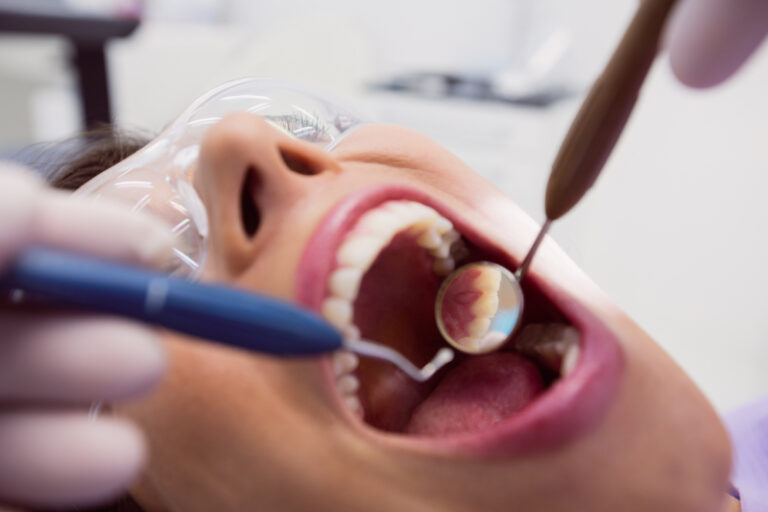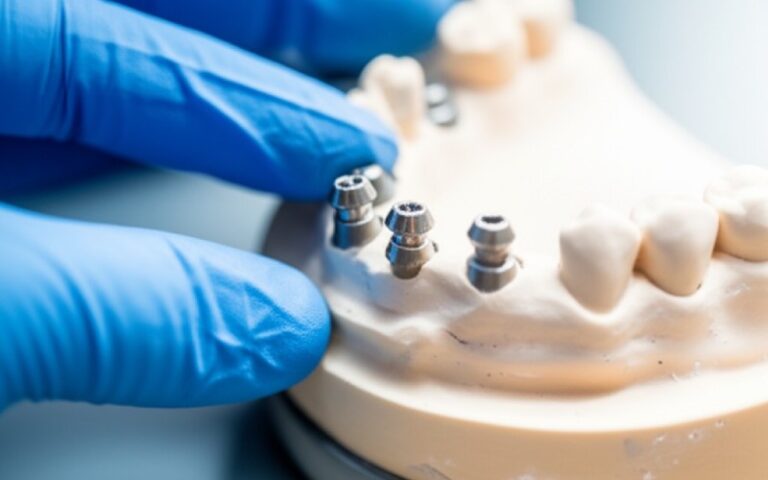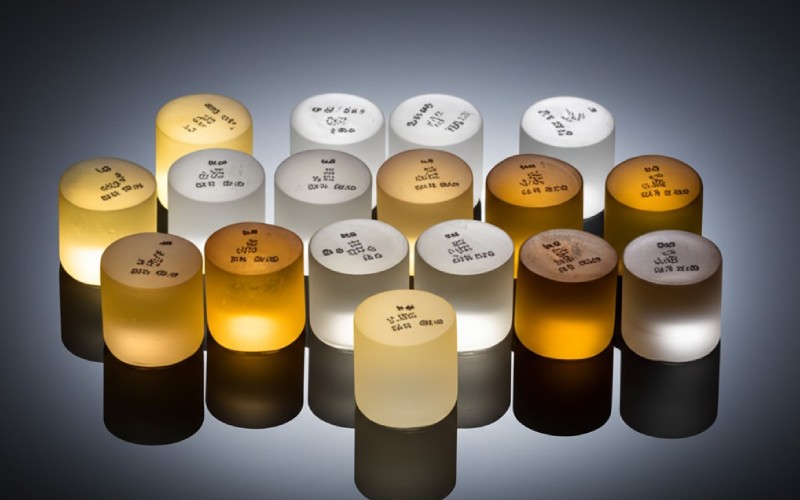
Emax: LiSi Press와 같은 리튬 디실리케이트 재료의 실제 강도 발견
이 lithium disilicate material, Emax, isn’t just another glass-ceramic; it was a revolution in a small ingot. It blended strength and beauty in a way I had never seen before.
In this post, we’ll explore what makes this material, Emax, so special. We will look at its amazing 굴곡 강도 and how it gets that strength from its tiny crystal structure. If you are a dentist, a lab technician, or even a patient curious about the 크라운 in your mouth, this article is for you. I’ll break down the science into simple terms and share what I know about this game-changing material, including other great products like LiSi Press.
목차
What Is Lithium Disilicate, Anyway?
Let’s start with the basics. What is 리튬 디실리케이트? At its heart, it’s a type of glass-ceramic. Think of it as a special kind of glass filled with a huge number of tiny, needle-shaped crystals. The specific chemical formula is Li2Si2O5. This is important because it’s the key to its strength. These 세라믹 are part of a family of 치과용 재료 that have transformed how we restore teeth. The company 아이보클라 비바덴트 was a true pioneer in this field, and they really set the standard for what these materials could do.
이전 리튬 디실리케이트, 우리의 all-ceramic options were mostly weaker 도자기. They looked nice but could chip easily. This new lithium disilicate glass ceramic promised both beauty and power. It has excellent 생체 적합성, which means it’s safe and gets along well with the tissues in your mouth. This makes it a top choice in 수복 치과. . 리튬 디실리케이트 itself is very stable.
이러한 세라믹 소재 are made through a controlled process of heating. This process creates a dense network of Li2Si2O5 crystals inside a glassy matrix. This structure is what stops cracks from spreading. So, when you choose a 리튬 디실리케이트 크라운, you’re getting a material that is designed from the molecule up to be tough and long-lasting. It’s one of the most trusted materials available for dental restorations 오늘. Lithium disilicate is also known for its great bond to 치아 구조.
Why Is Emax So Popular in Modern Dentistry?
So why did Emax become the celebrity of the 치과 world? For example, a patient with a cracked front tooth needs a perfect, 에스테틱 result. A traditional 도자기 베니어 feels risky. A stronger material like 지르코니아 wouldn’t have the same 반투명도. When choosing to use an Emax 복원, the result is incredible. You can’t tell which tooth is the 크라운 and which were natural.
The popularity of Emax comes from this amazing balance. It has the high 굴곡 강도 needed for a 후방 tooth but also the beautiful esthetics needed for an anterior 베니어. This versatility is a huge advantage. You can use this single lithium disilicate material for a wide range of jobs, from a full 크라운 to a thin 베니어 or even an inlay. This makes life easier for both the dentist and the 치과 기공소. The material gives us confidence that the 복원 will look good and last for a very long time.
It’s one of the most commonly used all-ceramic materials for a reason. Emax allows for minimally invasive restorations. This means we can save more of the natural 치아 구조, which is always the goal. The material can be made very thin, as little as 1.0 mm 에 대한 크라운, yet still be incredibly strong. This combination of features makes Emax a go-to choice for so many situations in 치과. It truly delivers on its promise of a strong and beautiful smile.
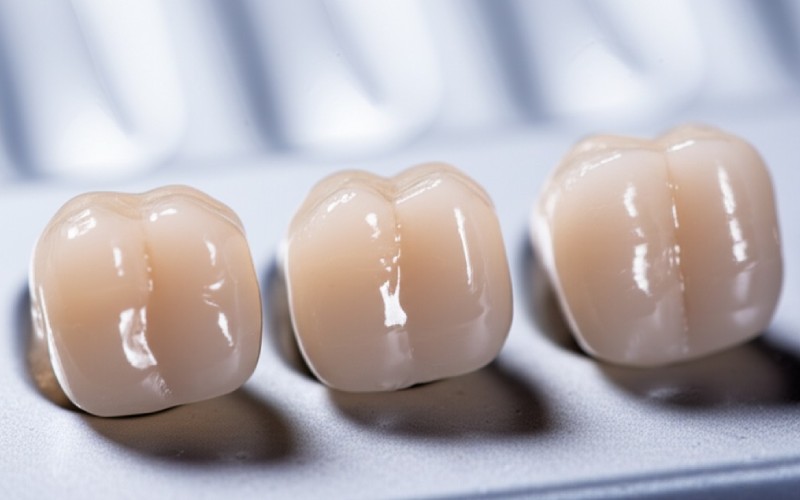
How Strong Is Lithium Disilicate? Let’s Talk Flexural Strength.
When we talk about strength in 치과, one of the most important numbers is 굴곡 강도. What does that mean in simple terms? Imagine trying to bend a small beam of the material. The 굴곡 강도 is the amount of force, or pressure, it can take before it snaps. We measure this force in megapascals, or MPa. A higher MPa number means a stronger material. This is a critical property for any 복원 that has to withstand chewing forces.
So, how does 리튬 디실리케이트 stack up? The 굴곡 강도 의 리튬 디실리케이트 세라믹 is very impressive. Most Emax products have a 굴곡 강도 of around 400 to 500 MPa. To put that in perspective, older 치과용 세라믹 might have a 굴곡 강도 of only 100-150 MPa. 이는 다음을 의미합니다. 리튬 디실리케이트 is three to five times stronger. This high strength is why we can use it for a 후방 어금니 크라운 and trust it not to break under pressure.
이 high flexural strength is a direct result of its internal structure. The dense, interlocking crystal network I mentioned earlier acts like rebar in concrete. It stops tiny cracks from growing and causing a fracture. This gives Emax 및 기타 리튬 디실리케이트 세라믹 the power to last for years, even in the tough environment of the mouth. The impressive 굴곡 강도 is a key reason why 리튬 디실리케이트 has earned its place as a top-tier all-ceramic material. The modulus is also well-balanced.
What Are the Key Mechanical Properties of Lithium Disilicate?
동안 굴곡 강도 gets a lot of attention, it’s not the whole story. To truly understand a material, we need to look at all the mechanical properties of lithium disilicate. One of these is 골절 인성. Think of 골절 인성 as a material’s resistance to an existing crack spreading. 리튬 디실리케이트 has excellent 골절 인성 due to its high crystal content. This makes the 복원 more forgiving if a small flaw develops.
Another key property is the modulus of elasticity. The modulus is basically a measure of stiffness. A material with a very high modulus is very rigid, while one with a low modulus is more flexible. The modulus 의 리튬 디실리케이트 is similar to that of natural tooth dentin. This is a huge advantage. It means that when you bite down, the Emax 크라운 flexes in a way that is very similar to a real tooth. This reduces stress on the underlying 치아 구조 and the cement holding the 크라운 를 제자리에 놓습니다.
이러한 good mechanical properties combine to give 리튬 디실리케이트 복원 their fantastic 내구성. . properties of lithium disilicate glass-ceramics also include good thermal expansion characteristics and 색상 안정성. 이는 복원 won’t expand or contract too much with hot and cold foods, and it won’t change color over time. It’s this complete package of 굴곡 강도, modulus, and toughness that makes 리튬 디실리케이트 so reliable.
Can It Really Look Like a Real Tooth? (A Look at Translucency and Esthetics)
Strength is great, but in 치과, looks matter just as much, especially for an anterior tooth. This is where 리튬 디실리케이트 truly shines. The secret is a property called 반투명도. 반투명도 is the ability of a material to let some light pass through it, just like natural enamel.
Emax 및 기타 리튬 디실리케이트 products come in various levels of 반투명도 and opacity. For example, 아이보클라 비바덴트 makes ingots labeled HT (High Translucency) and LT (Low Translucency). An HT ingot is great for an inlay 또는 베니어 where you want the natural color of the tooth to show through. An LT ingot is better for a 크라운 where you need to block out a dark underlying tooth. This control over optical properties allows a skilled technician to create a 복원 with amazing, life-like esthetics.
그리고 에스테틱 quality is not just about 반투명도. It’s also about how the material reflects light and the fine details that can be added. The surface of a 리튬 디실리케이트 크라운 can be stained and glazed to perfectly mimic the subtle textures and colors of a real tooth. This level of artistry, combined with the material’s inherent 에스테틱 potential, is why 리튬 디실리케이트 is the gold standard for beautiful 치과 수복물. The final crystalline structure is key to these esthetics.
How Do You Make an Emax Restoration? (Press vs. Mill)
So how do we turn a piece of 리튬 디실리케이트 into a perfectly fitting 베니어 또는 크라운? There are two main ways to 제작 an Emax 복원: pressing and milling. Both methods are used all the time, and each has its own advantages. The choice often depends on the type of 복원 and the equipment in the 치과 기공소.
The first method is the pressing technique, which uses products like IPS e.max Press. This is a bit like the classic “lost wax” technique. First, a wax model of the 크라운 is made. This wax model is then surrounded by an investment material. After the wax is burned away, a small 리튬 디실리케이트 ingot is heated until it becomes like thick honey. This molten glass-ceramic is then pressed into the mold. It’s a very precise way to 제작 a 복원 and is excellent for getting a perfect fit.
The second method is milling, which uses a CAD/CAM machine. This is a high-tech approach. The tooth is scanned, either in the mouth (intraoral scanner) or from a model. A computer then designs the 복원및 machine carves the 크라운 또는 베니어 out of a solid block of 리튬 디실리케이트 재료, such as an IPS e.max CAD block. This method is very fast and allows for same-day 치과 in some cases. You can mill a beautiful all-ceramic 크라운 in under an hour.
What’s the Real Difference Between IPS e.max Press and CAD?
At first glance, IPS e.max Press 그리고 IPS e.max CAD might seem like just two different ways to make the same thing. But there are some key differences in the materials themselves. The main difference is the state of the 리튬 디실리케이트 when you start. The IPS e.max Press ingot is a fully crystallized lithium disilicate glass ceramic (Li2Si2O5). It already has its final, high 굴곡 강도.
그리고 IPS e.max CAD block, on the other hand, is delivered in a partially crystallized state. It is a softer, bluish material made of lithium metasilicate crystals (Li2SiO3). This material has a much lower 굴곡 강도, around 130 MPa, which makes it easy for the machine 에 mill quickly and without wearing out the tools. After the 복원 is milled, it must go into a special oven for a firing cycle. This is the final crystallization step. During this firing, the lithium metasilicate (Li2SiO3) transforms into the much stronger 리튬 디실리케이트 (Li2Si2O5), and the 크라운 turns into the correct tooth color.
So, which one is better? It depends. IPS e.max Press is often said to have a slightly higher 굴곡 강도 (around 470 MPa vs. 400 MPa for CAD) and is preferred for more complex cases or a three-unit bridge. IPS e.max CAD offers incredible speed and convenience. Both methods, when done correctly, produce a fantastic and strong all-ceramic 복원. . fabrication method is just a different path to the same excellent result.
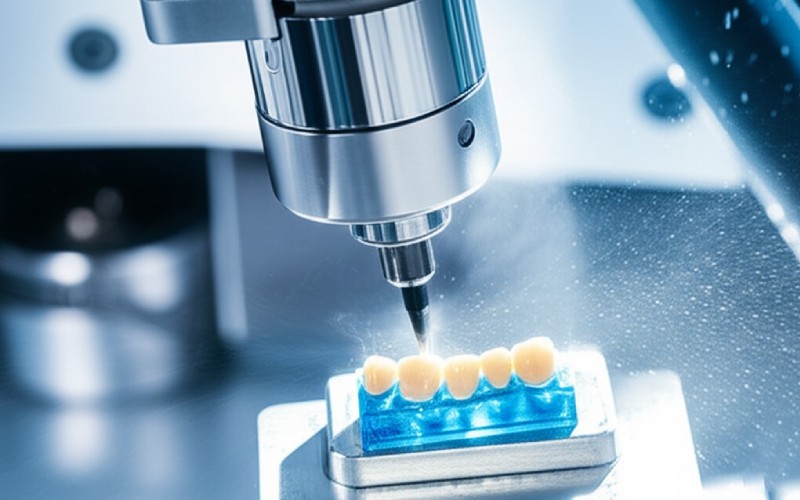
Are There Other Options Besides Emax? What About LiSi Press?
동안 아이보클라 비바덴트 and its Emax brand are the big names in 리튬 디실리케이트, they are not the only players in the game. Competition is a great thing in 치과용 재료, and other companies have developed their own excellent lithium disilicate glass ceramics. One of the most well-known alternatives is GC’s LiSi Press. This is another pressable 리튬 디실리케이트 that competes directly with IPS e.max Press.
LiSi Press boasts similar properties, including high 굴곡 강도 and beautiful esthetics. Some technicians love the way the LiSi Press ingot flows and the vitality they can get in their all-ceramic restorations. It uses a similar pressing technique and is designed to create a strong, 모놀리식 복원 or be layered with 도자기 for custom characterization. The existence of products like LiSi Press pushes all manufacturers to keep innovating and improving their 치과용 세라믹.
Whether a lab chooses Emax 또는 LiSi Press often comes down to personal preference, experience, and relationships with the manufacturers. The important thing is that we have choices for high-strength 세라믹 소재 that allow us to provide the best possible care for our patients. This is a great time for periodontics and restorative work.
What’s the Secret on the Inside? (A Peek at the Microstructure)
I’ve mentioned the crystal structure a few times, but let’s take a closer look. The real secret to the 굴곡 강도 의 리튬 디실리케이트 is its microstructure. Imagine a pile of needles thrown on a table. Now imagine filling all the space between those needles with glue. That’s a simple way to picture the microstructure in lithium disilicate glass. The “needles” are tiny, elongated crystals of 리튬 디실리케이트 (Li2Si2O5). The “glue” is the glassy matrix that holds them all together.
This interlocking crystalline structure is incredibly effective at stopping cracks. When a force is applied to the 크라운, a tiny crack might start in the glass matrix. But as soon as it hits one of the many Li2Si2O5 crystal needles, it has to change direction. It gets deflected and blunted. To break the material, a crack would have to find a path through this dense, tangled forest of crystals. This gives the material its amazing 골절 인성 그리고 굴곡 강도. The study of the crystallization and microstructure in lithium is fascinating.
The chemical process is also key. The heat treatment on crystallization is precisely controlled. Some research, like a vitro study on the effect of P2O5, shows how tiny additions of other chemicals can influence crystal growth. The p2o5 on the crystallization can affect the size and density of the crystals. All this science, from p2o5 and heat treatment to the final treatment on crystallization and microstructure, is done to create the ideal 모놀리식 structure. It’s a world away from a weaker lithium silicate 같은 li2sio3.
Is Lithium Disilicate the Right Choice for Everything?
It is not the perfect solution for every single situation. The biggest consideration is for long-span bridges, especially in the 후방 area of the mouth where biting forces are highest. While an Emax 크라운 is great for a single 후방 tooth, a bridge that replaces two or more teeth requires even more 굴곡 강도. . connector areas of a bridge are where stress is concentrated.
For a long 후방 bridge, a stronger material like 모놀리식 지르코니아 is often a better choice. 지르코니아 can have a 굴곡 강도 of over 1000 MPa, more than double that of 리튬 디실리케이트. However, 지르코니아 typically has lower 반투명도, so it can be a trade-off between ultimate strength and the best esthetics. So, where is 리튬 디실리케이트 the hero? It’s perfect for almost any single-tooth 복원. This includes anterior 그리고 후방 crowns, veneers, inlays, and 온레이.
You can also 제작 a short, three-unit bridge with 리튬 디실리케이트 if it’s in the anterior region (front of the mouth). The decision always comes down to the specific clinical situation. We have to consider the patient’s bite (occlusal forces), the location in the mouth (anterior vs. 후방), and the desired 에스테틱 outcome. But for the vast majority of all-ceramic single-unit 치과 수복물, 리튬 디실리케이트 재료 is a fantastic, reliable, and beautiful choice.
기억해야 할 사항
- Strong and Beautiful:
리튬 디실리케이트(Emax,LiSi Press) offers a great mix of굴곡 강도(400-500MPa) and life-likeesthetics. - Crystal Power: Its strength comes from a dense structure of interlocking
Li2Si2O5crystalneedles in a glassmatrix. - Versatile Use: It’s great for a single
크라운,베니어,inlay및온레이in both theanterior그리고후방parts of the mouth. - Two Ways to Make: 가능
fabricated usingapressing technique(IPS e.max Press) or milled with a CAD/CAMmachine(IPS e.max CAD). - Not for Everything: For long bridges in the back of the mouth, a stronger material like
지르코니아is often a better choice.


